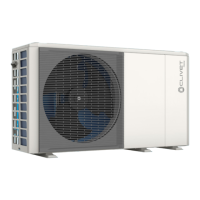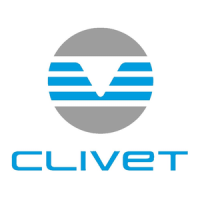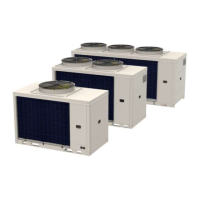11
About R-290 refrigerant
3.3.13 Leak detection methods
Remember that:
• electronic leak detectors can be used to detect flammable
refrigerants, but their sensitivity may not be adequate or
require recalibration
• detection equipment must be calibrated in a refrige-
rant-free area
• the detector is not a potential ignition source and is sui-
table for the refrigerant
• leak detection equipment must be configured at a
percentage of the lower flammability limit (LFL) of the
refrigerant and be calibrated for the refrigerant used with
confirmation of the appropriate gas percentage (max.
25%)
• leak detection fluids are suitable for use with most refri-
gerants but the use of detergents containing chlorine
should be avoided, as chlorine can react with the refrige-
rant and corrode copper piping.
If there is a refrigerant leak:
• remove or extinguish all naked flames
• if brazing is required, all of the refrigerant must be remo-
ved from the system, or isolated (by means of shut-off
valves) in a part of the system away from the leak
• purge the system with oxygen-free nitrogen (OFN) both
before and during brazing.
3.3.14 Removal and evacuation
Follow the procedure below:
► remove the refrigerant
► purge the circuit with inert gas
► evacuate
► purge again with inert gas
► open the circuit by cutting or brazing
Remember that:
• the refrigerant charge can be recovered in the appropria-
te cylinders
• the system must be purged with oxygen-free nitrogen to
make the unit safe
• it may be necessary to repeat this procedure several
times
• compressed air or oxygen must not be used for this
operation
• purging can be performed by introducing oxygen-free
nitrogen into the vacuum circuit in the system and conti-
nuing to fill until the operating pressure is reached, then
venting into the atmosphere and recreating the vacuum
• this procedure must be repeated until the refrigerant is
completely exhausted from the system.
When the last charge of OFN is added:
• the system must be vented to barometric pressure to
allow the work to be performed
This operation is absolutely essential if brazing operations
are to be carried out on the piping.
• check that the vacuum pump outlet is not closed for any
ignition source and that good ventilation is available.
3.3.15 Charging operations
Remember that:
• when using charging equipment, avoid contamination
with different refrigerants
• cylinders must be kept upright
• before the refrigerant is charged into the system, ensure
that it is properly earthed
• the system must be labelled after charging (if the label is
not already present)
• extreme care must be taken to avoid overfilling or under-
filling the system
• before recharging the system, the pressure must be
tested using oxygen-free nitrogen
• after charging, but before start-up, the system should not
leak
• an additional check for leaks must be carried out before
leaving the site.
3.3.16 Decommissioning
Remember that:
• before performing this procedure, it is essential that the
technician is fully familiar with the equipment and all of
its components
• all refrigerants must be recovered following safe proce-
dures
• an oil and refrigerant sample must be taken before pro-
ceeding
• before reusing the recovered refrigerant, it should be
analysed
• before starting the procedure, it is essential to check that
the power supply is available
• electrically isolate the system.
Before proceeding, check that:
• mechanical equipment for handling refrigerant cylinders
is available, if necessary
• the necessary personal protective equipment is available
and is used
• the recovery process is carried out under the constant
supervision of a competent person
• the recovery equipment and cylinders comply with the
regulations in force.
To recover:
• if possible, transfer the refrigerant to the unit using a
“pump-down” procedure
• if it is not possible to create a vacuum, use a manifold
that allows the refrigerant to be exhausted from various

